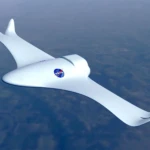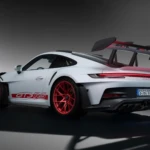Small batch CNC machining: Unlocking precision manufacturing for innovation and agility
The manufacturing landscape is constantly developing. Gone are the days when mass production is the only viable economic model. Today, speed, flexibility and custom drives are successful. This is Small batch CNC processing Shine, providing a powerful bridge between one-time prototyping and high volume production. It gives innovators, startups, engineers and established businesses access to high-precision metal parts without the traditional overhead or lead times associated with large manufacturing industries.
What exactly is small batch CNC processing?
Essentially, small batch CNC machining involves the use of computer numerical control (CNC) machines (precisely programmed subtraction manufacturing equipment) to produce limited identical parts, usually from 1 unit to 100-500 units. Unlike manual machining or quality production tools, CNC machining relies on digital blueprints (CAD/CAM models) to automatically guide cutting tools with non-accurate.
this "Small batch" Emphasize Economic feasibility and targeted applications:
- Cost-effective: Avoid making large investments only for professional tools needed for large-scale operations, such as injection molds or stamping molds.
- flexibility: Enables fast design iteration. Discover improvements after testing 50 units? Easily modify the next batch of CAD files.
- speed: Eliminate the complex tools that take weeks or months to create. Production starts faster.
- Low risk: Verify the market, test the concept or meet the initial customer needs without investing a lot of resources.
- Custom: Ideal for custom components, limited edition products, professional tools/clips or replacement of outdated parts.
Why choose small batch CNC processing?
Although technologies such as 3D printing (additive manufacturing) are popular for rapid prototyping, CNC machining offers obvious advantages, especially functional metal parts:
- Excellent material properties: CNC machines work directly with solid blocks (billets) of metal (aluminum, steel, titanium, brass, copper, exotic alloys) and plastic. This results in parts with inherent material strength, density, thermal stability and fatigue resistance, exceeding typical printed polymers.
- Excellent accuracy and tight tolerances: CNC machines typically achieve incredible detail and dimensional accuracy within microns. This is crucial for parts that require strict fit, functionality, interchangeability (such as aerospace components, medical devices or precision instruments).
- Top surface finish: From original machined finishes to polished, anodized, plating or painted surfaces, CNC parts offer a wide range of aesthetically pleasing and functionally necessary finishes on the machine, often requiring minimal after-treatment.
- Material versatility: While performing well in metals, CNC also handles high-performance engineering plastics (e.g. PEEK, DELRIN/ACETAL, ULTEM), where dimensional stability and mechanical properties are crucial.
- Volume scalability: Seamless paths are usually provided starting with CNC machining. Verified part designs are often produced in larger quantities when needed, and if the volume explodes, the same proven process can be used, or cost-efficiently converted to other methods.
Game Change: Five-axis CNC machining
For the most complex geometric shapes and strict quality requirements, Five-axis CNC machining Significantly improves functionality. Unlike traditional three-axis machines (moving in X, Y, Z), five-axis machines allow cutting tools and/or The workpiece rotates about two additional axes of rotation.
Why is this crucial for small batches?
- Complex geometric shapes make it feasible: It is impossible to produce complex contours, deep cavity, undercut and organic shapes in a single setup, or require multiple complex setups and fix them on a 3-axis machine. Think of a turbine blade, impeller, prosthesis or complex liquid.
- Enhanced accuracy and surface quality: The ability of the optimal orientation tool to relate to the workpiece surface greatly improves tool access, reduces vibration, makes the tool shorter (more rigid) and makes the mixing radius smoother. This translates directly into higher accuracy and better finishes.
- Reduce setup time and cost: Complex parts that require multiple arrangements on a 3-axis machine can usually be processed in a fixture on a five-axis machine. This speeds up production, reduces processing errors, and reduces the total cost per part, which is an important advantage in small batches.
- Save materials and weight: Five-axis machining paths are often more efficient, minimizing excess tool movement and thus minimizing material waste. The ability to get closer to net shape reduces overall material costs.
Working with expertise: Why Greatlight makes a difference in small batches of CNCs
Browsing small batches of CNC machining, especially complex five-axis work, requires in-depth expertise, advanced technology and a service-oriented mindset. This is where to work with professional manufacturers Great Become priceless.
As a professional five-axis CNC machining manufacturer, Gregmigh brings:
- The most advanced five-axis technology: Investment in advanced five-axis CNC machining centers ensures that the most demanding geometry and tight tolerances required for small batch projects.
- Deep material knowledge: Expertise in a wide range of metals and engineering plastics ensures optimal material selection and processing strategies for performance and cost.
- One-stop solution: In addition to processing, Greatlight offers a comprehensive after-processing and finishing service (anodizing, gilding, painting, heat treatment, laser marking, etc.), simplifying your supply chain and ensuring that finished parts arrive at your doorstep.
- Quick customization and quick transformation: Focus on quickly solving your unique manufacturing challenges, enabling fast prototyping, iterative development, and the tight delivery window necessary to meet product launches (NPI) or emergency replacement.
- Precision priority mentality: Dedicated to providing dimensional accuracy, surface quality, and consistent partial reliability regardless of batch size.
- Competitive value: Their specialization and process efficiency translate into providing the best value for your custom precision machining needs, even for smaller quantities.
Conclusion: Small batch CNC-modern manufacturing agility engine
Small batches of CNC machining, especially when enhanced by the five-axis technology, is no longer just a stepping stone. This is a strategic manufacturing approach that is critical to innovation, customization, speed to market and management needs in today’s dynamic world. It enables access to high-precision metal parts to enable companies of all sizes to effectively turn various ideas into reality.
For engineers pushing boundaries, startups prove concepts, medical innovators creating life-saving devices or aerospace pioneers designing complex components, working with competent and technologically advanced manufacturers is key. Greatlight, specializing in advanced five-axis CNC machining, complex production technology and comprehensive service, is an ideal partner to bring your most complex, high-precision small batch projects into implementation.
Ready to turn your design into accurate reality? Explore the capabilities of small batch CNC machining in Greatlight – cutting-edge features that comply with custom-made, cost-effective manufacturing solutions.
FAQ: Small batch CNC machining and Greatlight
Q: What materials can be used for small batch CNC processing?
one: Wide range! We regularly use machine aluminum alloys (6061, 7075), stainless steel (303, 304, 316), tool steel, brass, copper, copper, titanium, titanium, inconel, and engineering plastics (PEEK, acetal/acetal/delrin, nylon, nylon, ultem/polyethem/polyetherimide, ptfe). We provide the best materials for the strength, durability, corrosion resistance and cost requirements of your application.
Q: How accurate are small batch CNC parts?
one: Very precise. Standard accuracy typically maintains tolerances within +/- 0.005 inches (0.127 mm), and our advanced five-axis functionality combined with meticulous process control enables tighter tolerances, usually down to +/- 0.0005 inches (0.0127 mm) or better, depending on the function and material.
Q: What is the typical delivery time for a small batch order?
one: Delivery times vary according to partial complexity, quantity, material availability and post-processing requirements. However, the significant advantage of small batch CNC compared to tool approaches is speed. Prototypes can usually be flipped in a few days. Production batches range from 1-100 blocks usually between 1-3 weeks. We prioritize quick response and clear communication to the schedule.
Q: Does the small batch CNC have a minimum order quantity (MOQ)?
one: One of the core benefits of small batch CNC is Low or No We would be happy to start producing a single prototype or very low volume from just 1 piece. There are no minimum order requirements specified in this process.
Q: Why are five-axis machines more suitable for complex small batch parts?
one: Five-axis machining greatly reduces the need for multiple settings and complex fixtures. It allows for the machining of complex geometric shapes (deep cavity, clear undercut, smooth organic curves) in one operation, resulting in significant improvement in accuracy (cumulative errors are limited by re-fixed cumulative errors), finish quality (better tool orientation), and overall speed. This complexity processing capability is ideal for complex high-value small batches.
Q: What file formats are required for citation and processing?
one: We prefer 3D CAD models in steps (.stp), Iges (.igs), Parasolid (.x_t, .x_b), or SolidWorks (.sldprt). Detailed 2D diagrams (PDF or DWG/DXF) have critical dimensions, tolerances and surface finishes are also essential. Clear design intent documentation helps ensure perfect results.
Q: Can Greatlight handle the processing and finishing of parts?
one: Absolutely. We provide comprehensive internal and cooperative post-processing services. This includes various surface finishes (anodized-type II, III, color; plating-Ni, cr, Zn; powder coating, paint), heat treatment (annealing, hardening, speed regulation), passivation, bead/sand explosion, laser marking, assembly, assembly, etc. We provide a real "Parts preparation" Solution.
Q: How to ensure quality in small batch production?
one: Quality is always integrated: rigorous machine calibration, skilled programmer/operator, process inspection and final QC inspection using precise measurement equipment (CMMS, micron, surface tester). A detailed inspection report (exhibition) can be provided. Our process consistency ensures the reliability of a portion of the portion even in small batches.

















